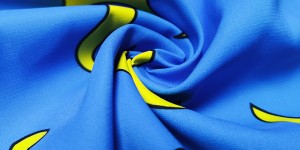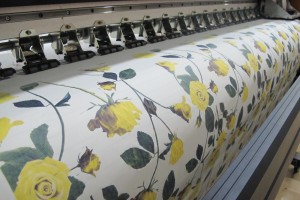Advantages and disadvantages of digital printing fabrics, digital printing is printing with digital technology. Digital printing technology is a high-tech product that integrates machinery, computer, electronic information technology and gradually formed with the continuous development of computer technology. The emergence and continuous improvement of this technology has brought a new concept to the textile printing and dyeing industry, and its advanced production principles and methods have brought development opportunities to textile printing and dyeing. The editor of REHOW company will give you a brief introduction to digital printing here:
Digital printing is divided into digital direct printing and digital thermal transfer printing. Digital direct printing means: use a digital printer to directly print out the patterns you need on various materials. For digital thermal transfer printing, it is necessary to pre-print the printing pattern on special paper, and then transfer it to various materials by thermal transfer printing, such as: T-shirts, underwear, sportswear and other clothing.
The fabric determines the process. At present, there are four main types of digital printing:
(1) Polyester fabric sublimation: This is a very popular process at present; because of the low investment threshold and simple printing process, general printing factories will be equipped as a supplement to screen printing; only one printer and heat transfer machine are required , as well as sublimation ink and thermal transfer paper, thermal transfer is currently developing in the direction of high speed and wide width, such as REHOW’s transfer paper, which can be 3.2 meters wide;
(2) Reactive digital printing of pure, linen, viscose, etc.; compared with polyester thermal transfer printing, reactive digital printing is more cumbersome, requiring pre-treatment, printing, steaming, water-based, qualitative, etc.;
(3) Nylon acid digital printing;
What are the advantages and disadvantages of digital printing fabrics?
(4) Paint direct-injection printing; such as REHOW digital direct-injection printing machine;
Currently polyester is printed on paper and then heat transferred to cloth. Nylon is also OK, but the color fastness of several color systems is not ideal, especially light. Cotton and silk are usually printed directly on the fabric and can cost roughly twice as much as polyester.
The digital printing of chemical fiber is called dispersion printing. It first prints the pattern on the paper through a digital printing machine, and then transfers it to the fabric at a high temperature of 180 degrees Celsius. Of course, the temperature of different fabrics is different. I just give an example.
Digital printing of silk, cotton, and linen is called reactive printing, which is directly sprayed on the fabric through a digital printing machine, but this fabric requires a process in the early stage, called sizing, otherwise the color will not be removed.
However, the white embryo fabric cannot be treated. The treatment here refers to: softener, waterproof agent, etc. Because these treatments will prevent the dye from going to the fabric. Treatments such as softeners are performed after the flowers are printed. The processing of fabric sizing is required by the printing process, so it is different from the processing mentioned above.
In fact, the price of digital printing has dropped a lot in the past few years. From 100-200 yuan/square meter when it first came out, it only needs a processing fee of 10-30 yuan/square meter now. Therefore, basically all conventional fabrics can be used, except for some fabrics with relatively long yarns, which may easily cause clogging of the nozzle and affect the ink absorption effect.
However, the cost of digital printing is still higher than that of ordinary printing, which determines that digital printing is more suitable for products with high added value. For example, digital printing has just emerged and is suitable for many applications on silk, which is the reason. But now there are many applications of chemical fiber fabrics. The logic lies in high processing costs & low white embryo prices. Looking at the current trends in many industries, chemical fiber fabrics are more widely used, such as imitation silk fabrics.
REHOW Textile Machinery focuses on the R&D and customization of digital printing on polyester fabrics. In China, Jiangsu, Zhejiang, Shanghai and Southeast Asia, Bangladesh, India, and South American countries, children’s wear has a high degree of promotion. It is committed to the development and innovation of digital printing. The fee for plate making and proofing is low. After a successful order, the proofing fee can be returned. The after-sales team responds to customers in a timely manner. Provide timely solutions to feedback problems, refill materials and reprint according to actual conditions, ensure flawless delivery of products, free return and exchange if there are quality problems, cooperate with brand logistics, and support door-to-door delivery.
Post time: May-11-2023





